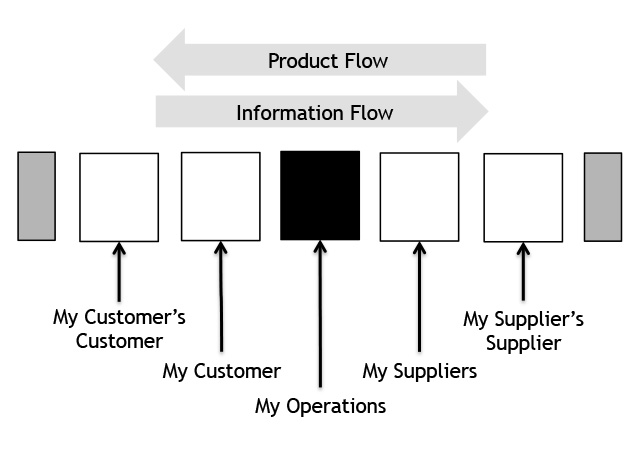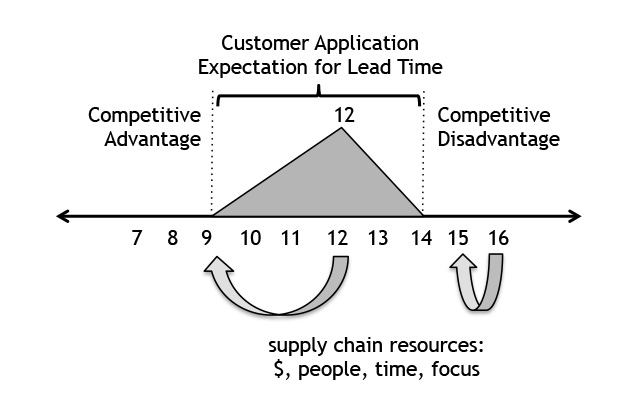What is the Baker Hughes Rig Count Trying to Tell Us?
What is the Baker Hughes Rig Count Trying to Tell Us_
Those who cannot remember the past are condemned to repeat it.’ — George Santayana.
One of the questions dominating oil service company C-Suites and boardrooms this quarter has been debate about US drilling activity and where it will head next. Will LNG exports drive a recovery in the gas-drilling market? Will $50 oil be sustained? Will we see $20 before we see $200? How deep do we cut and for how long? While our crystal ball is as foggy as anyone’s in the industry, we do believe a glance back in the rearview mirror can help explain how we got here and provide some insight as to where we might go next.
A Look Back
The Baker Hughes rotary rig count has been an industry bellwether since 1945, and it remains one of the best indicators of capital spending today, 70 years later. Over the years it has become more detailed; adding information on the desired reservoir target, depth of the wells and technological sophistication (vertical, directional and horizontal). The rig count is being used today to estimate the number of wells drilled and with the rig count by basin it is being used to forecast production.
Mostly Conventional Drilling, 1987-1999
When Baker Hughes started publishing an oil and gas rig count 1987 we had 559 oil rigs, 337 gas rigs and 26 rigs that were either geothermal or tight holes. Within two years, the gas-directed rig count matched the oil-directed count. By the end of the 90s, some began to refer to the US “gas and oil” industry, rather than the “oil and gas” industry. The industry experimented with “tight gas,” encouraged by tax credits. Overall activity was dominated by drilling in conventional reservoirs. The total rig count averaged only 845 from July 1987 to July 1999, a total of 12 years. The “norm” during this period was a US rig count that has spent two-thirds of its time between 710 and 970 and rarely broke 1,000.
The Unconventional Gas Boom, 1998-2008
The first big play of the 21st century was unconventional gas. It began in 1998 in the Barnett in Texas. Activity quickly spread to the Fayetteville in Arkansas; the Haynesville in Louisiana and Texas; the Woodford in Oklahoma; the Marcellus in West Virginia and Pennsylvania, the Eagle Ford in Texas; and finally the Utica in Ohio, Pennsylvania and West Virginia. The boom in natural gas drilling peaked in August-September 2008 at 1,606 rigs.
The Unconventional Oil Boom, 2005-2014
Horizontal drilling and hydraulic fracturing techniques developed for unconventional gas began to be applied to unconventional oil plays starting with the Bakken in 2005. Again, the new techniques spread like wildfire and soon plays in the Eagle Ford, Bakken and Permian were delivering breakthrough oil production.
Chart 1: US Rig Counts, Oil-Directed, Gas-Directed and Total
(source: Baker Hughes, www.bakerhughes.com)

The Overlap, 2005-2008
Between 2005 and 2008 the industry benefitted from booms in both unconventional gas and unconventional oil drilling. The rig count rose from 1,243 at the beginning of 2005 to 2,031 at the peak of unconventional gas drilling — an average increase of over 17 rigs per month for 45 months
The Unconventional Gas Bust, 2008-present
Chart 2: US Gas-Directed Rig Count
and Gas Production
(source: Baker Hughes and EIA)

Production from the unconventional gas plays more than satisfied the US markets and in September 2008 market sentiment collapsed. The gas-directed rig count, shown in Chart 2, peaked at 1,606. Lower gas prices would not support dry gas development, and attention shifted to wetter plays where oil and natural gas liquids (NGLs) production could drive acceptable economic returns. Oil and gas companies pivoted, if they could, away from dry gas and towards oil and NGL plays. The gas-directed rig count fell precipitously. Despite a significantly lower gas-directed rig count, shale-gas production rose and has continued to rise since, despite a declining rig count. More efficient drilling techniques, an increase in the number of wells drilled per rig, attractive economic returns on wet gas (NGLs) wells, and more production per well have more than offset the production decline from the existing conventional well population.
More than six years later the natural gas rig count continues to fall, and natural gas production continues to increase driven by the shale gas plays.
The Unconventional Oil Bust, 2014-present
Chart 3. US Oil-Directed Rig Count
and Oil Production
(source: Baker Hughes and EIA)

Referring to Chart 3, note that an oil-directed rig count of around 200 allowed conventional oil production to decline from 6-Mbpd to 5-Mbpd. When the oil-directed rig count increased to 300-400 rigs, the industry found it was adding enough production to offset reservoir declines. (To be fair the changing mix of wells and efficiency improvement also contributed as well.) By 2010, drilling unconventional oil plays began to add significantly to production. Note that there was a 1-2 year lag between drilling activity and production coming online. The oil-directed rig count rose faster than the gas-directed rig count, and had risen reaching a peak of 1,609 in October 2014. From its peak in October 2014, the oil rig count fell precipitously (see Chart 1).
The similarity between the unconventional gas boom and bust and the unconventional oil boom (and bust?) are spooky. Both were driven by new technology plays that changed economics and resulted in significant increases in activity and, in time, record production levels. Coincidently, both peaked at about 1,600 rigs. Unable to absorb the extra gas, the US gas market saw gas-on-gas competition causing prices to decouple from oil and trade at the coal floor. The lower prices changed drilling economics, and the rig count fell. Six years later it continues to fall as total US production grows, now approaching 75 Bcfd.
In the case of oil, the incremental production from the US, driven by these unconventional oil plays, exceeded the worldwide growth in oil demand. That is; all of the incremental global demand growth was satisfied by incremental US shale production and OPEC found itself losing market share to US shale oil. By late 2014, this caught the eye of OPEC. Unwilling to continue to see the share loss continue, OPEC chose to protect share, abandoned its role of swing producer, and let oil prices fall. With oil trading at about half its value a quarter ago and OPEC unwilling to play the swing producer role, the US rig count is now in free-fall even as US oil production increases. We note the change in production mirrors the change in activity with a lag of 1-2 years suggesting that US oil production will continue to increase in 2015 unless oil prices fall further and impact production.
So What Next? 2015-2020 and Beyond
We see four fundamental drivers that will support US activity levels for the next several years.
First, we expect maintenance drilling will continue, establishing a base level of activity. The recent rig count history would suggest we might need no more than 300 gas-directed drilling rigs and no more than 500 oil-directed drilling rigs to maintain “flat” production.
Second, we do not believe natural gas will see a boom in activity in the next five years. It is unlikely that supply shortfalls will be the source of the next activity increase. Today the market is amply supplied. Sixteen years after the beginning of the unconventional gas boom, and about six years since the bust, gas production is still growing and approaching 75 Bcfd compared to just over 50 Bcfd sixteen years ago.
It is unlikely gas demand will be the source of a surprise. Most demand that can switch to gas has switched. New demands for natural gas could appear, however, most require significant investment and long lead times. The industry will see demand coming before it must begin drilling.
A year ago supplying LNG exports would have been a candidate to drive the next activity boom. However, lower oil prices have eliminated the attractive arbitrage with Asian gas. Potential North American exporters are having difficulty signing up Asian customers willing to commit to long-term guaranteed deliveries.
Without significantly increases in demand, significant exports or a supply shortfall we would expect gas-on-gas price competition to continue while the rig count remains “stagnant”. If we are wrong, it will most likely be because we have underestimated depletion or because higher oil prices reestablish the Asian LNG opportunity.
Third, we do not expect oil to drive another near term cycle. Although the parallels between charts 2 and 3 are only anecdotal, they give us a reason to pause. Oil production declined with a rig count of 200 to 300 and held flat with a rig count of 300 to 400. While the rig count dropped each week in 2015, US oil production continues to increase. The historic lag between the rig count and production suggests that increasing production will continue throughout much of 2015. We do not know if, in aggregate, the oil wells drilled in the Bakken, Eagle Ford and Permian will show the slow decline rates associated with unconventional gas. If they do, a back of the envelope calculation might suggest that we will require no more than 500 rigs to offset the production decline and maintain production of 9-Mbpd.
Unless OPEC’s low-cost producer, Saudi Arabia, chooses to resume the role of swing producer, the high-cost US shale production will play that role and will set global oil prices.
Again, unless decline curves disappoint or global demand grows much more than the forecasts of 1.0-1.2 Mbpd oil prices will remain low enough to discourage uneconomic shale oil production.
Last, while natural gas liquids (NGLs) are expected to remain an attractive and growing market, the market is not big enough to drive a broad-based recovery.
Forecasts Are Always Wrong, Including This One!
To be fair, we did not anticipate the unconventional gas boom in 1998 or the unconventional oil boom in 2005. Sadly, we did not anticipate the busts either. (In fact it is a little embarrassing that we, the industry, did not anticipate the unconventional oil bust after looking in the rear view mirror at the unconventional gas bust six years ago!) So, absent another amazing technology story, we believe the US needs to hunker down for an extended period with activity below 1,000 rigs. Is your forecast different? What do you see driving the next US oil or gas boom in the 21st century?
Perhaps more important, what is your strategy for the next leg of the business? Cutting staff and squeezing vendors won’t protect margins for long. Are you preparing to fundamentally change your business processes.


